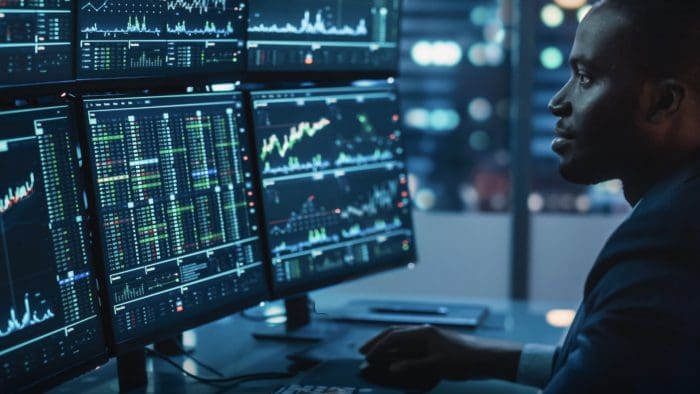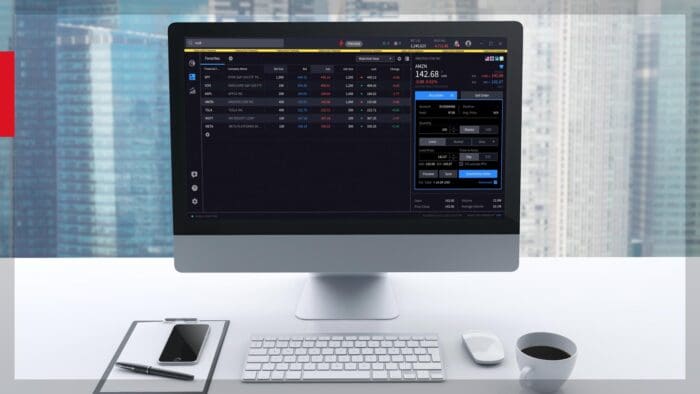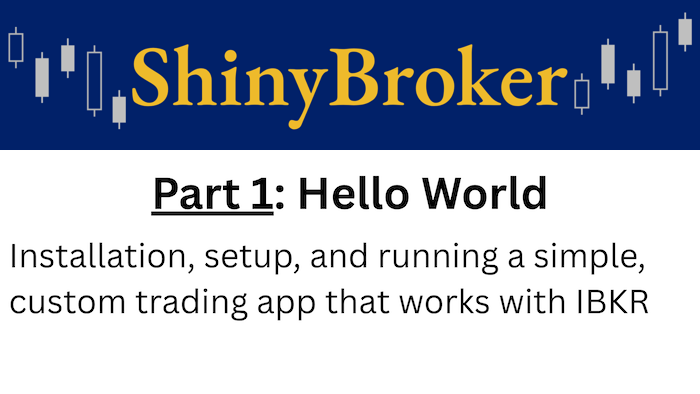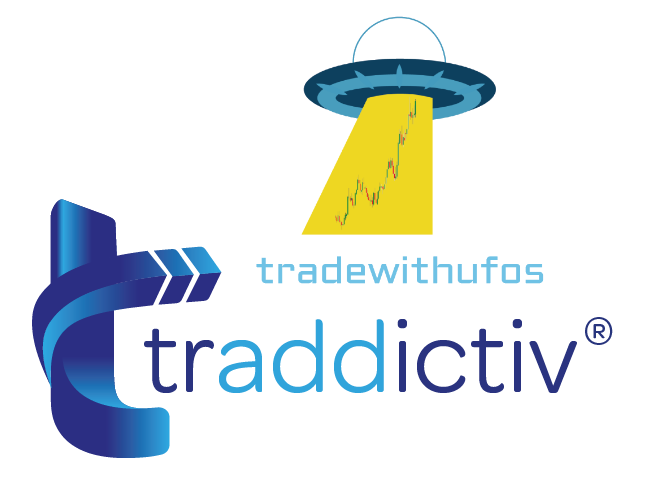In this episode, Kevin Davitt of Nasdaq returns to unpack how markets are shrugging off rising geopolitical tensions and what a “big, beautiful bill” could mean for investor sentiment and Fed policy.
Summary – IBKR Podcasts Ep. 269
The following is a summary of a live audio recording and may contain errors in spelling or grammar. Although IBKR has edited for clarity no material changes have been made.
Andrew Wilkinson
Welcome to this midweek look at markets. My name’s Andrew Wilkinson with Interactive Brokers, and I’m delighted to have back on this segment Kevin Davitt, who’s the Head of Index Options Content at the Nasdaq. Huge welcome back, Kevin. How are you?
Kevin Davitt
Kevin is thrilled to be back on. I’m doing well. It’s the middle of summer in Chicago—I have no complaints.
Andrew Wilkinson
Summer starts here tomorrow officially. It’s gonna be 96 degrees in my backyard.
Kevin Davitt
That sounds like an official summer day.
Andrew Wilkinson
So Kevin, it seems to me that investors have brushed off both domestic and international concerns so far this year. But how are investors now responding to what could be called escalating tensions in the Middle East? What are you seeing? Are people hedging? Are they waiting for a break up or down before jumping back in either way? What’s it look like from your vantage point?
Kevin Davitt
I think the way you frame that is quite accurate. It does seem somewhat confusing, given some of the headlines we’ve seen over the past week. We’ll talk about it briefly—this is actually a topic that inspired me to write something that will end up on my Nasdaq author page in short order. But just to kind of frame the reality in market terms…
I think about two weeks ago, when a spat broke out on social media platforms between the President and Elon, and on that day you saw Tesla shares fall fairly precipitously. At the index level—I follow the Nasdaq-100—it fell just over 2%, and then promptly kind of bounced right back.
And what we’ve seen for the better part of June is that the index I care about has really been ping-ponging between 20,000 and 21,500. Then last week, we get this—to use your term and potentially euphemism, we’ll see—but these escalating tensions in the Middle East, bombings… and there was a very similar reaction. Roughly a 2% decline in the Nasdaq-100 overnight, and by the morning, indices had largely pared those losses.
So to your sort of tee-up here, the tensions and the overall concerns that really dominated a couple of months ago have been put aside more recently—rightly or wrongly. I think the reaction to escalations between a nuclear power and an aspiring nuclear power are arguably concerning.
I then read—because I like to challenge my default assumptions—a take from someone I consider informed, who argued that escalating tensions, using that euphemism, are arguably like the new QE. Because there is typically a whole lot of spending, whether that’s on defense or construction.
And that was an interesting take. It typically forces central bankers to sort of pause and maybe ease. We will see what shakes out. There are a whole bunch of potential overhangs in the next couple of weeks. So perhaps when I’m back talking with you again, some of this will be resolved and we’ll have something interesting to talk about. But here and now, the market has shaken it off and we’re within sort of a stone’s throw of all-time highs.
Andrew Wilkinson
That’s a very interesting response to my question. It seems to me that any of these major disruptions that we’ve seen—whether it’s been from the President or now internationally—they almost serve to become a catalyst for solving something or a positive change. It can’t get much worse. And of course, with a nuclear war it could—don’t get me wrong—but I mean, I feel like the market is ready to spring higher.
Last time we spoke—either on a webinar or on this session a month ago—you seemed to feel a little bit more reserved about the market. You were, I think, hedging a little bit, looking for more downside risk. Do you still feel the same way now?
Kevin Davitt
You’re right. One of the last times, that was my inclination. I would say, big picture, given the business that we’re in, that I’m arguably always wired that way. I’m kind of by default concerned about downside—something I alluded to in that original remark.
Am I concerned? Yes, because I always am.
But then I would point to early July being the end of the 90-day pause on—whatever we want to call them—retaliatory tariffs. So if there’s no extension there, what does that mean for our trade partners and the volatility that we saw with the original introduction?
We have this effort to pass a budget resolution, which they’re apparently targeting for early July. There are real issues with corporate tax rates, with credits, with state and local tax reform. It is a big, big bill. Whether you believe it’s beautiful or not is not going to be resolved here, but it’s a big issue that has potential market implications—and potential interest rate implications.
And then at the same timeframe, you have stuff like ISM and CPI, the inflation data that the Fed will target, monthly non-farm payroll… and all of that potentially influences the path for the Fed going into Q3.
One of the things you and I talked about—today is a Fed day, right? And so what impact, if any, will that have? Remains to be seen a couple hours from now. I’m not sure what the Interactive Brokers take is, but it has been slow of late, and the market does seem to want to move toward those old highs.
Andrew Wilkinson: Let’s talk about individual names on the Nasdaq. What are you seeing moving these days, Kevin?
Kevin Davitt
One resource available to your listeners is that there is a page—if you go to your search engine of choice and put in “Nasdaq most active”—it will take you to a market activity page. You can see it at this point, a half hour into a trading session or at the end of the day.
What I would say is that, generally speaking, the names that get a great deal of attention from the derivatives landscape are the ones that are most active in the cash markets. So invariably, you’ll see something like Nvidia up there—Apple, Palantir, Amazon, Tesla, Broadcom, names like that. That was me looking yesterday at the close; those were all in the top 15.
And that’s relatively stable—outside of days where you see something like a deal or real kind of story stocks. And so that remains fairly consistent.
I think if we take a step back—and I think, Andrew, you know this well—from across the landscape, whether it’s derivatives or cash markets, those names have been focal points for attention for two and a half, three years now. That could, and at some point will, change. But what the catalyst for that is, I don’t know. Here and now.
Andrew Wilkinson
A lot of the names you mentioned there, Kevin, go directly into what’s known as the Magnificent Seven. Is that Magnificent Seven still a market force, or is the pendulum shifting elsewhere—particularly in the wake of developments with artificial intelligence?
Kevin Davitt
I would say both pendulums move back and forth, and so there’s an ebb and flow—just like the market. From my perspective, I would say the excitement around some of those names has largely played out or crested at some point, without a huge pullback like we saw in 2022. But I think it still remains fairly active.
We spoke on, I believe, a webinar, where in the pullback earlier this year, individual investors really did go after and pick up exposure to some of these Magnificent Seven and adjacent names, and institutional types had lightened their load. They have really been proven correct there. But that excitement around those names—just based on flows data—has arguably slowed quite a bit.
Now, that could also be influenced by the fact that this is the middle of summer. It’s gonna be 96 degrees in your backyard tomorrow. And by the nature of this point in the calendar, things do tend to slow down.
Andrew Wilkinson
Kevin, you alluded to it earlier on—it is Fed Day, and there’s probably going to be no change in the Fed funds rate. I’d be shocked if there was. But we are going to get a change in the Fed projections for the quarter and a new dot plot. Any additional thoughts on the Fed’s output today?
Kevin Davitt
There’s always parsing of the statements and comparisons as to where they see something like the terminal rate on dates where they update that plot—that dot plot, pardon me.
The expectation here and now—and it kind of has been for the past couple of months—is that the next cut, following this pause of whatever length it is, will likely be September.
Could that change? Most certainly, given the uncertainty at the macro level. So we’re talking about things like budget resolutions and tariffs. I would be surprised to see—given the Fed’s sort of dual mandate—a move in advance of some of that uncertainty being addressed.
I can and have been wrong in the past, and interest rate markets can get it wrong. And so it will be a data point. I don’t expect it to be hugely market-moving. But maybe next time you have me on, it’ll be the two of us talking about how wrong we were about that June Fed meeting. We’ll see.
Andrew Wilkinson
Brilliant. Kevin Davitt, Head of Index Options Content at Nasdaq—thank you for joining me.
Kevin Davitt
Thank you for having me, Andrew.
Andrew Wilkinson
And to the audience—if you liked today’s episode, don’t forget to subscribe wherever you download your podcasts from. Bye.
Disclosure: Interactive Brokers
The analysis in this material is provided for information only and is not and should not be construed as an offer to sell or the solicitation of an offer to buy any security. To the extent that this material discusses general market activity, industry or sector trends or other broad-based economic or political conditions, it should not be construed as research or investment advice. To the extent that it includes references to specific securities, commodities, currencies, or other instruments, those references do not constitute a recommendation by IBKR to buy, sell or hold such investments. This material does not and is not intended to take into account the particular financial conditions, investment objectives or requirements of individual customers. Before acting on this material, you should consider whether it is suitable for your particular circumstances and, as necessary, seek professional advice.
The views and opinions expressed herein are those of the author and do not necessarily reflect the views of Interactive Brokers, its affiliates, or its employees.
Disclosure: Nasdaq
Index
Nasdaq® is a registered trademark of Nasdaq, Inc. The information contained above is provided for informational and educational purposes only, and nothing contained herein should be construed as investment advice, either on behalf of a particular security or an overall investment strategy. Neither Nasdaq, Inc. nor any of its affiliates makes any recommendation to buy or sell any security or any representation about the financial condition of any company. Statements regarding Nasdaq-listed companies or Nasdaq proprietary indexes are not guarantees of future performance. Actual results may differ materially from those expressed or implied. Past performance is not indicative of future results. Investors should undertake their own due diligence and carefully evaluate companies before investing. ADVICE FROM A SECURITIES PROFESSIONAL IS STRONGLY ADVISED.
© 2023. Nasdaq, Inc. All Rights Reserved.
Options
For the sake of simplicity, the examples included do not take into consideration commissions and other transaction fees, tax considerations, or margin requirements, which are factors that may significantly affect the economic consequences of a given strategy. An investor should review transaction costs, margin requirements and tax considerations with a broker and tax advisor before entering into any options strategy.
Options involve risk and are not suitable for everyone. Prior to buying or selling an option, a person must receive a copy of Characteristics and Risks of Standardized Options. Copies may be obtained from your broker, one of the exchanges or The Options Clearing Corporation, One North Wacker Drive, Suite 500, Chicago, IL 60606 or call 1-888-OPTIONS or visit www.888options.com.
Any strategies discussed, including examples using actual securities and price data, are strictly for illustrative and education purposes and are not to be construed as an endorsement, recommendation or solicitation to buy or sell securities.
© 2023. Nasdaq, Inc. All Rights Reserved.
Disclosure: Options Trading
Options involve risk and are not suitable for all investors. For information on the uses and risks of options, you can obtain a copy of the Options Clearing Corporation risk disclosure document titled Characteristics and Risks of Standardized Options by going to the following link ibkr.com/occ. Multiple leg strategies, including spreads, will incur multiple transaction costs.

















Join The Conversation
For specific platform feedback and suggestions, please submit it directly to our team using these instructions.
If you have an account-specific question or concern, please reach out to Client Services.
We encourage you to look through our FAQs before posting. Your question may already be covered!